What's wrong with your lawn? Some lawn problems are obvious. Like there’s a herd of deer out there eating your lawn.
Others are trickier to diagnose. If your grass is brown, there could be several reasons. Not enough water? Too much water? Needs fertilizer?
Fixing lawn problems can be complicated. That’s why there’s a whole industry staffed by pros to deal with it.
But let’s get you started with these eight common lawn problems and solutions.
Then, if you’re still stumped, we’re here for you.
1. Entire Lawn Patches are Brown, Dry, Wilted
Lawn Problem Diagnosis: Grubs
What's causing brown patches in your lawn? It may be grubs. Brown, wilted grass could be caused by several different things, but a common culprit is grubs, those gross, white, C-shaped squishy creatures with legs near their head. 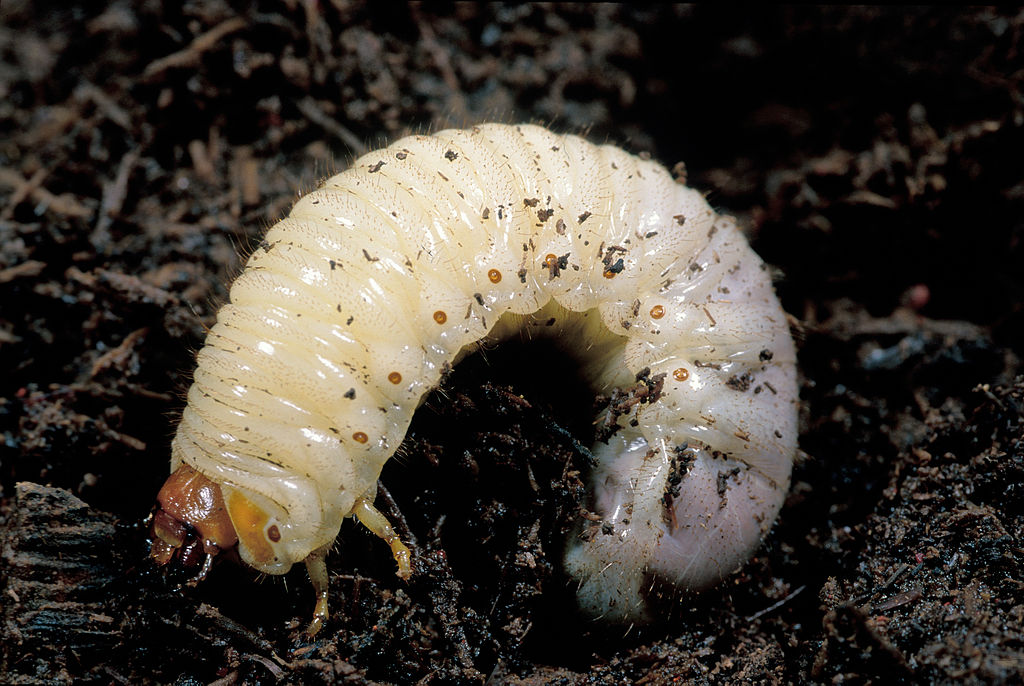
Grubs feed on grass roots and organic matter in the soil, causing sections of grass in the lawn to die. They essentially eat the roots right out from under the grass.
How can you tell if you have grubs? Look for these telltale signs:
- Raccoons, skunks, and birds rummaging in your yard. Apparently, grubs are delicious.
- Grab a handful of your lawn and tug. If it rolls up like loose carpet, you probably have grubs. They eat the roots holding the turf firmly in place on the soil.
- Walk on your lawn. If it feels spongy, you could have grubs.
Lawn Problem Solution: Grub Guard
The key to controlling grubs is to kill them before they hatch and begin to cause damage to your lawn. Prevention is your best bet.
At RainMaster, servicing Eau Claire, WI and Minneapolis, we apply Grub Guard right away in the spring during our first visit.
Then, you’re all set. Our product lasts throughout the entire growing season. And it won’t kill bees like the cheaper products most other companies use.
2. Thin Grass and Large Bare Spots
Lawn Problem Diagnosis: Compacted soil
Lawn Care Solution: Lawn Aeration
When your soil becomes compacted, your lawn can't breathe. Its roots can't take in water or nutrients, which weakens your turf and opens the door for disease and weeds. 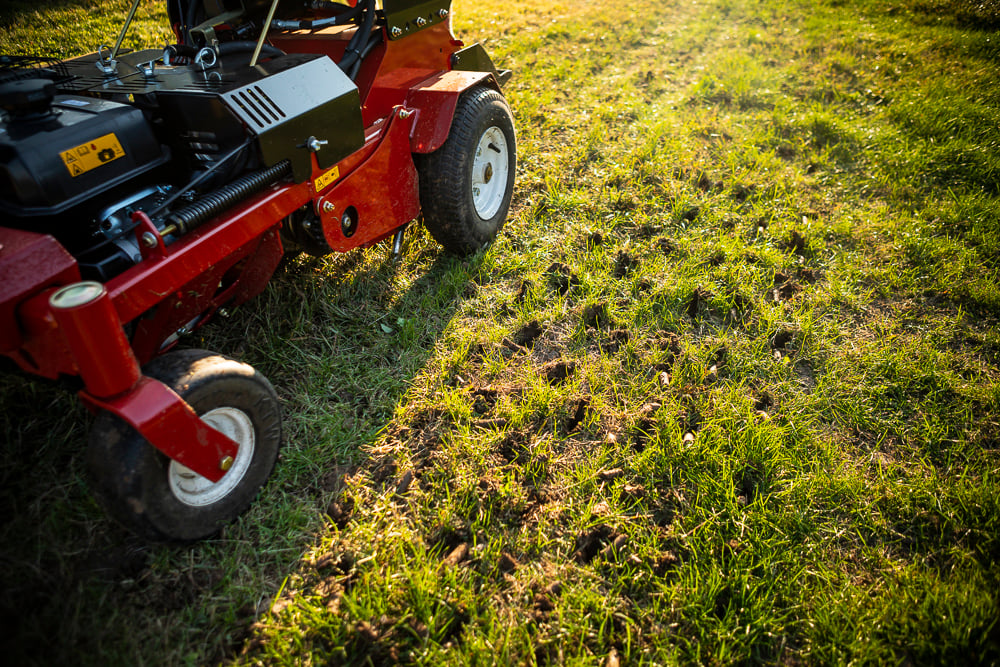 Lawn aeration uses a machine to pull out plugs of soil, creating spaces so that air and water can penetrate, which leads to healthier roots.
Lawn aeration uses a machine to pull out plugs of soil, creating spaces so that air and water can penetrate, which leads to healthier roots.
Lawn aeration also helps break down thatch, that layer of dead grass and stems that sits between the grass blades and the soil.
Aeration is often followed by overseeding, as the holes created by aeration are perfect new homes for the grass seed.
3. Common Lawn Problem: Grass Just Won’t Grow
This is a great example of how fixing lawn problems could involve a variety of solutions.
Here are some common diagnoses and solutions:
Lawn Problem Diagnosis: Too Much Shade
Lawn Care Solution: Let in more light
Grass needs sun to grow. You might have to thin your trees to let more sunlight through. Or replace areas of your grass with shade-loving plants or mulch.
Lawn Problem Diagnosis: Your lawn is too wet
Solution: Water your lawn fewer times a week or check for drainage problems in your yard
Lawn Problem Diagnosis: Your soil has poor nutrition
Lawn Care Solution: Check lawn soil pH
If you’ve been fertilizing, but it doesn’t seem to make any difference, your soil pH might need adjusting. If your pH is off, your grass won't absorb the nutrients it needs, even if you fertilize regularly. Have your soil’s pH level tested. If it’s out of whack, we can add the right soil amendments to bring it to the right level.
Lawn Problem Diagnosis: You might have poor-quality soil
Solution: Consider hiring a landscaping company to come in and dig out the sand and add good black soil
4. Tiny, Red, or White Threads on Your Grass
Lawn Problem Diagnosis: Red Thread
This summer lawn disease doesn’t affect the roots of your grass, so your lawn will recover.
Red Thread Solution: It helps to fertilize your lawn well in the fall and spring so your lawn is healthy and has a better chance of surviving this summer lawn fungus. 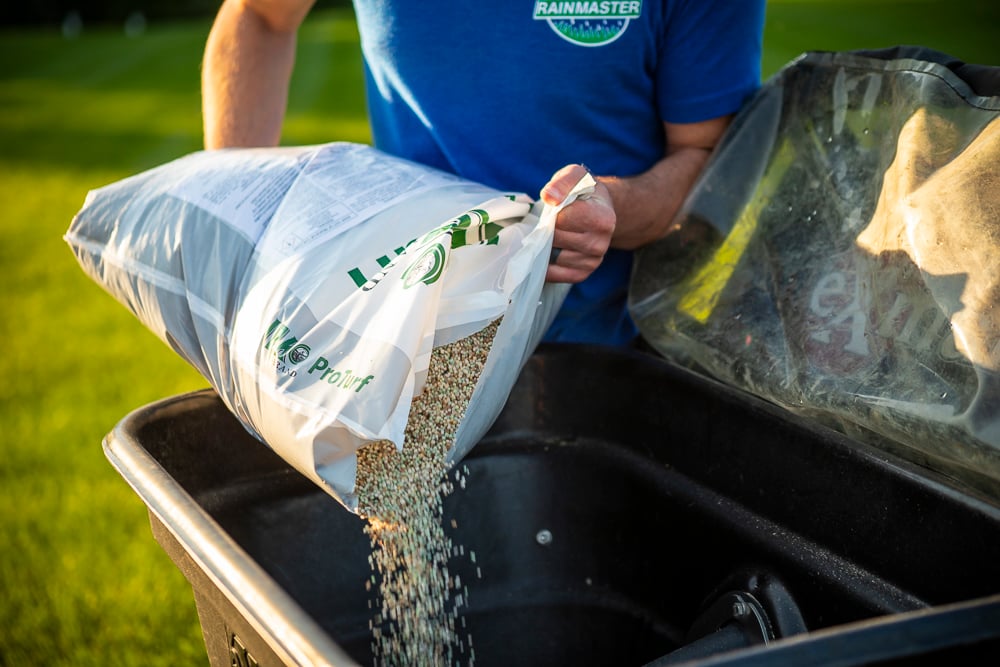
5. Bleached patches of lawn
Lawn Problem Diagnosis: Dollar Spot
Dollar spot is a summer lawn disease that thrives in high humidity in lawns that lack nitrogen. 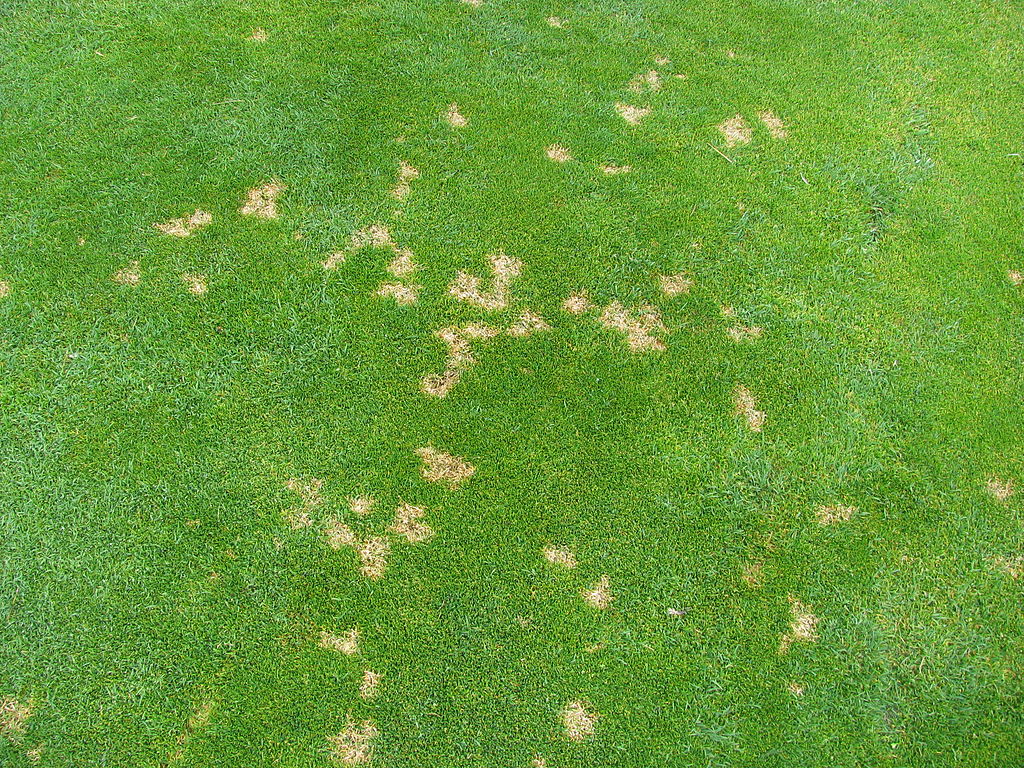 Dollar Spot Lawn Diseases Solution: Don’t water too often — you don’t want your lawn to be too wet. Applying nitrogen can help your lawn recover.
Dollar Spot Lawn Diseases Solution: Don’t water too often — you don’t want your lawn to be too wet. Applying nitrogen can help your lawn recover.
6. Circular Straw-colored Patches with a Green Spot in the Center
Lawn Problem Diagnosis: Necrotic ring spot
This summer lawn fungus loves cool and wet conditions, followed by heat and drought. It loves compacted soil. 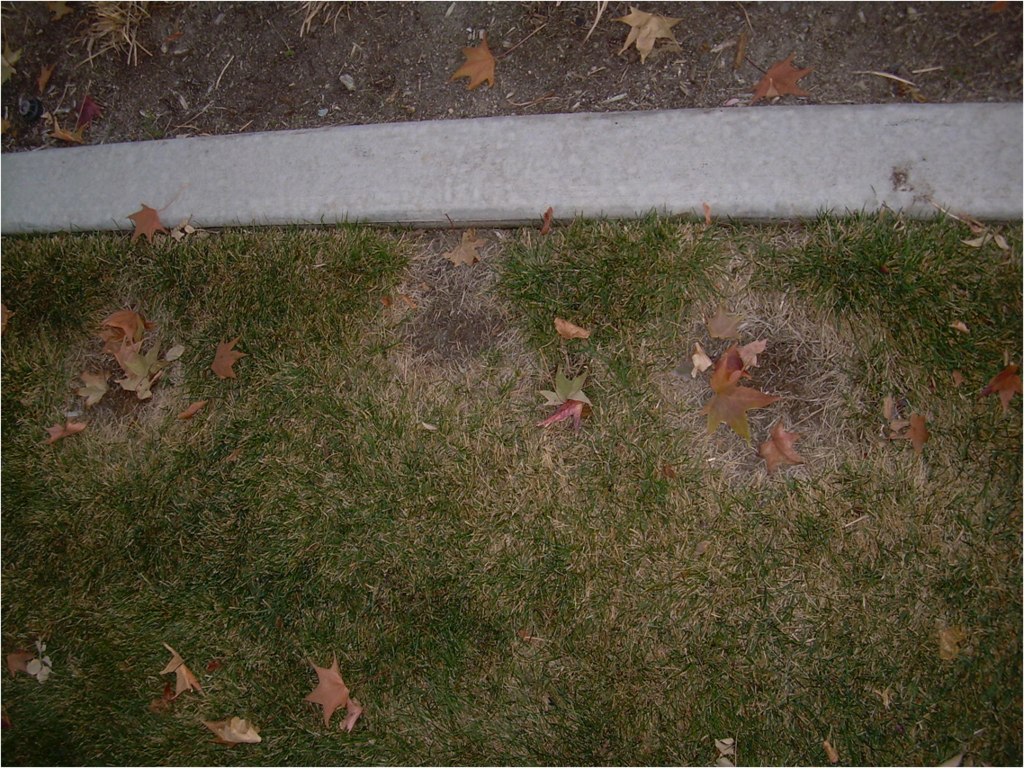 Lawn Care Solution: Battle it with aeration. You want to reduce compaction and improve your lawn’s drainage. Keep on top of your fertilizer, too.
Lawn Care Solution: Battle it with aeration. You want to reduce compaction and improve your lawn’s drainage. Keep on top of your fertilizer, too.
7. Brownish-yellow Circular Patches in Grass
Lawn Problem Diagnosis: Brown Patch lawn disease
Your lawn is extra susceptible to this summer lawn fungus if you water too much, add too much nitrogen, have poor soil drainage, compacted soil, or too much thatch.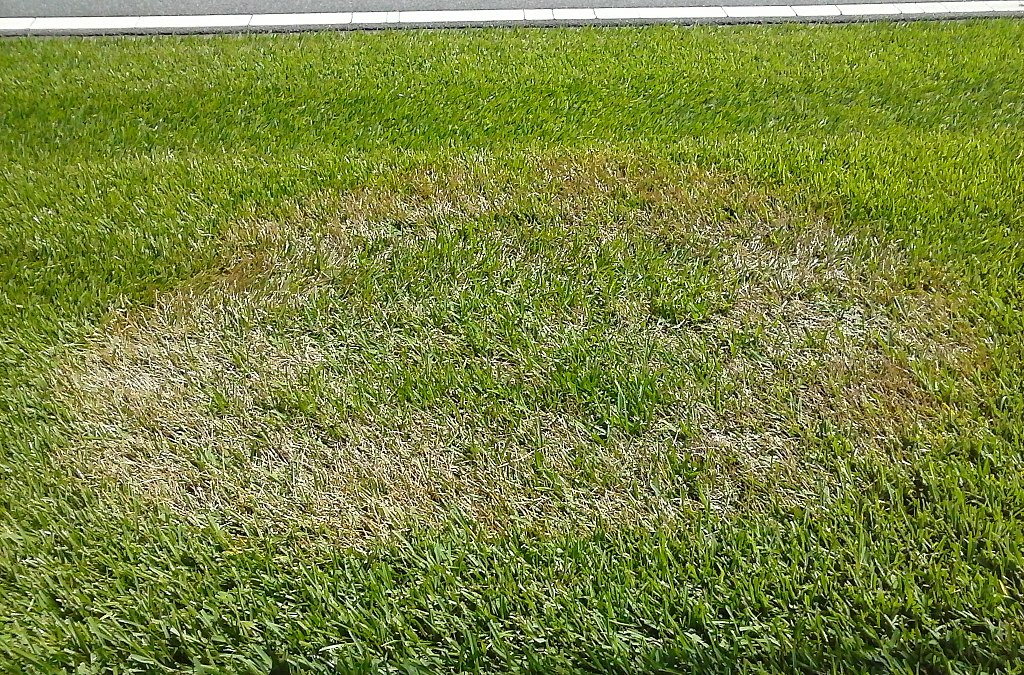 Brown Patch Lawn Disease Solution: Don’t over fertilize or over water. Water early in the day, so your lawn has time to fully dry before evening. Aerate and dethatch every year.
Brown Patch Lawn Disease Solution: Don’t over fertilize or over water. Water early in the day, so your lawn has time to fully dry before evening. Aerate and dethatch every year.
8. Green Stuff That Isn’t Grass
Lawn Problem Diagnosis: Weeds
First, let’s all take a deep breath. Weeds are the worst.
There’s no one solution to your weed problem. It all depends on which weed you’re battling. 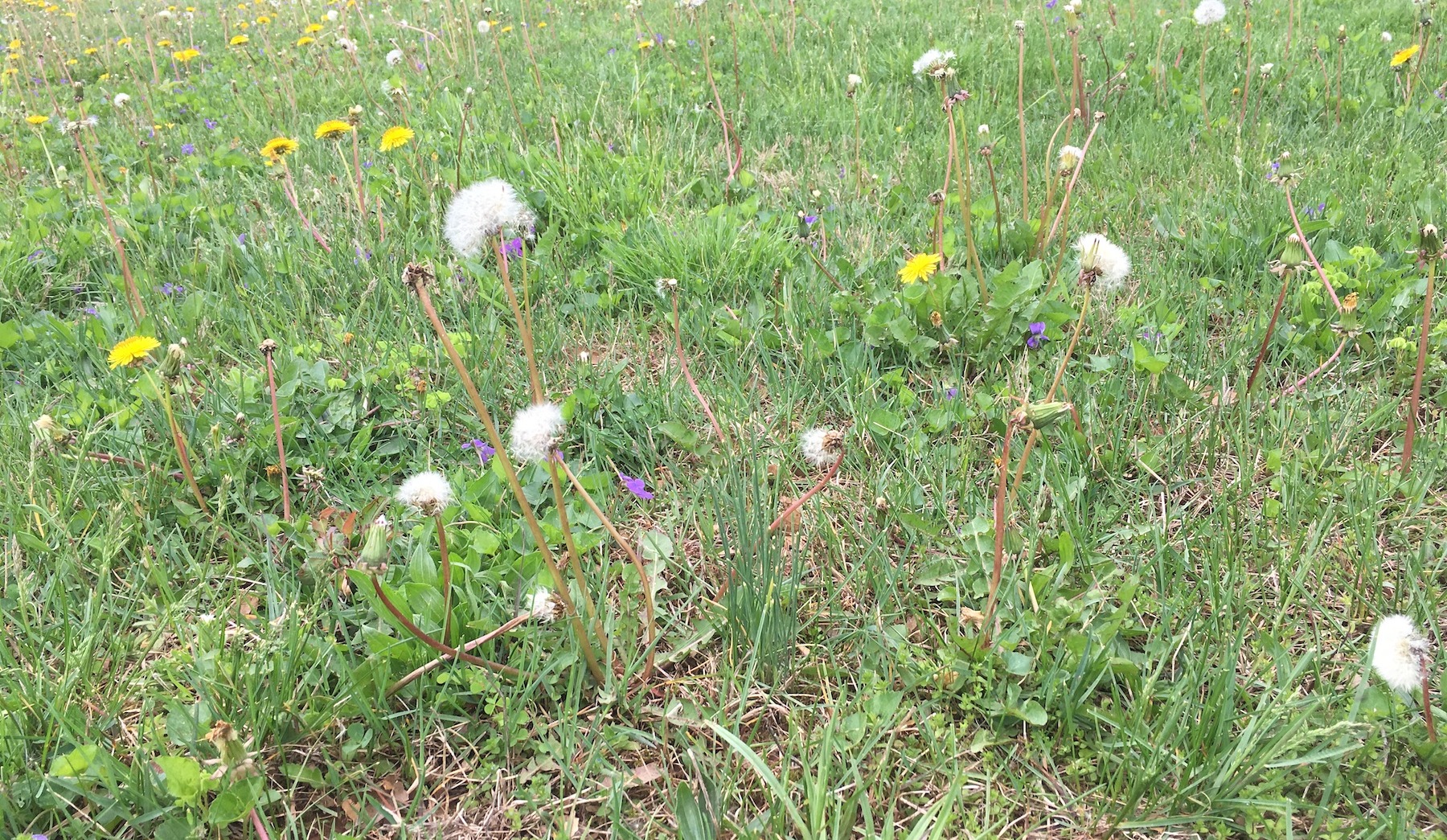 For crabgrass, pre-emergent is crucial — targeting the seeds as they germinate and take root in the soil.
For crabgrass, pre-emergent is crucial — targeting the seeds as they germinate and take root in the soil.
Canada Thistle needs weed control products to kill it, especially in spring and fall, before it can flower and seed.
We target dandelions with a specialty “weed shield” herbicide designed to reduce the number of dandelions that emerge. If any sneak through, we can treat them any time of year with a broadleaf herbicide.
Creeping Charlie is really tenacious. Using a professional-grade, specialty weed killer in the fall will go a long way to combat this weed. Your typical home improvement store weed control won’t do the job.
Weed control isn’t a one-time thing. It’s a continuous process.
Different common lawn weeds in our area are active at different times of year. Many of the peskiest spring weeds actually germinate in the fall.
And some products work based on temperature, which means we may switch products as needed, based on the weather.
There’s a lot more involved than just applying products on your lawn.
The main thing to know about lawn weeds is it’s easier to prevent them than to get rid of them. And a thick, healthy lawn is the best way to prevent weeds.
A few key tips to weed control:
- Mow high. Taller grass helps a lawn grow thicker. Mow too short, and the soil heats up, helping those pesky weed seeds to germinate.
- Water properly. A lawn that’s too wet or too dry encourages weeds.
- Get a plan. Invest in a complete, proactive lawn care program that includes both weed preventative and curative treatments from early spring to late fall.
Fixing Your Lawn Problems is Tricky — Trust RainMaster in
Eau Claire, WI & Minneapolis
Maybe you spotted your lawn problem here and you’re on your way to a solid solution.
But it isn’t always that easy.
Lawn care is complex, with a host of potential problems that are often tricky to diagnose and treat.
Still stumped? Looking for lawn care services in Eau Claire, WI or Minneapolis?
We’re happy to take a look and suggest the right course of action to get your lawn in shape.
Want to get to the bottom of your lawn problems and be confident about your choice for lawn care services? Request a quote today! We’ll review your lawn care options together so you can make a great choice. Then, you can finally enjoy your lawn and stop worrying about it.
Image Source: Grub, Dollar Spot, Necrotic Ring Spot, Brown Patch


